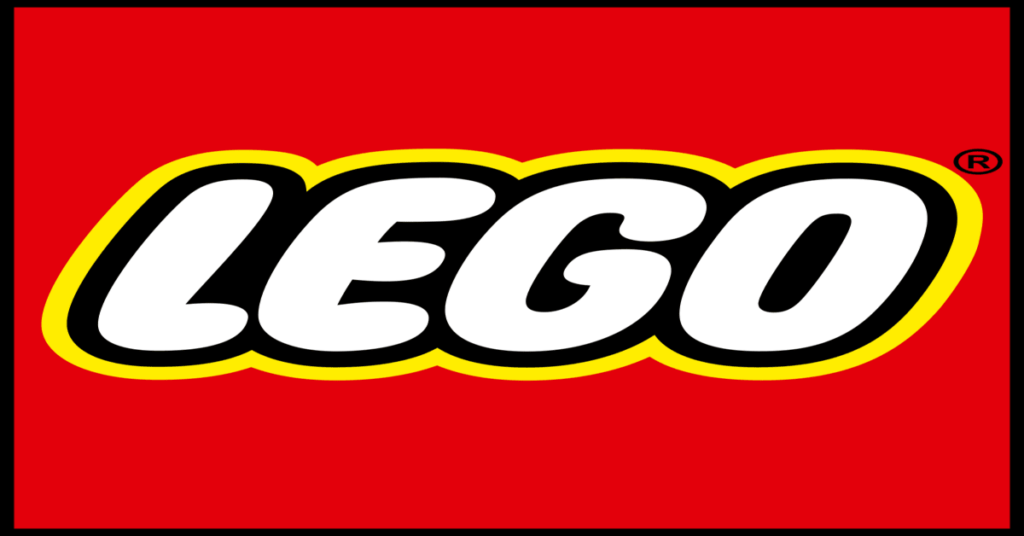Brand advocacy is when enthusiastic customers, fans, and partners rave about your company authentically. Their genuine word-of-mouth marketing helps attract new prospects and grow your business. Here’s how to build a tribe of advocates who love your brand.
What is Brand Advocacy?
Brand advocacy involves individuals who love and support your brand by promoting its products and services to others. These advocates voluntarily endorse your brand through positive reviews, word-of-mouth recommendations, and content creation on social media. Brand advocacy is not limited to customers and can include employees, business partners, and influencers, all of whom contribute to your brand’s success by extending its reach and driving revenue growth.

Why Brand Advocacy Matters?
- Improved Brand Perception: Brand advocacy enhances how people perceive your company. Instead of your organization touting its virtues, a “real person” – a customer, employee, or influencer – is extolling the virtues of your company, product, or services. This adds an authentic and relatable dimension to your brand’s image.
- Reflection of Brand Authenticity: Advocates convey information that is seen as more authentic. This authenticity reflects positively on your company, reinforcing the genuine nature of your brand. People are more likely to trust recommendations and endorsements from peers.
- More Organic Brand Awareness: Brand advocates foster organic growth in brand awareness. Their enthusiasm generates positive conversations around your products and services. This organic growth in visibility can lead to more leads, sales, job applicants, and overall growth for your business.
- Higher Likelihood of Media Attention: The more conversations your advocates generate, the more likely it is that media outlets will take notice. News outlets and publications may start writing about your brand due to all the buzz generated by advocates. This kind of media attention not only opens up new and broader audiences but also boosts your brand’s trustworthiness within the community.
- Wider Audience Reach: Brand advocates share exciting, positive content about your products or services on their social networks. This gives you access to their friends, family, and followers, expanding your reach into previously untapped markets.
- Cost Savings: One of the most significant advantages of brand advocacy is its cost-effectiveness. While advocacy programs may involve some initial investment, the return on investment (ROI) far outweighs the costs. Consider how much it would cost to produce the same amount of organic marketing yourself, and you’ll realize the cost savings brand advocacy offers.
4 Types of Brand Advocates to Recruit
Are you looking to build a strong advocate program for your brand? Here are some groups that you should consider:
1. Empowered Employees: Your employees can be a great resource in promoting your brand. By providing them with the right tools and training, you can encourage them to share company news and content on their personal social media profiles. This can be achieved by setting up an employee advocacy program on your intranet.
2. Raving Customers: Satisfied customers are the best advocates for your brand. By delivering exceptional customer service and creating a positive experience for them, you can turn them into brand ambassadors. You can also feature their testimonials on your website and social media channels to showcase your brand’s success stories.
3. Influential Influencers: Partnering with influencers who align with your brand values can help you reach a wider audience. By collaborating with influencers for co-marketing campaigns, you can tap into their followers and enhance your brand’s visibility.
4. Strategic Partners: Cultivating win-win relationships with strategic partners can be mutually beneficial. By working together to co-promote each other’s brand, you can reach new audiences and create more opportunities for growth.
7 Tips for Creating Raving Brand Advocates
To enhance your advocacy program, it is important to follow these best practices:
- Identify and segment your potential advocates in order to effectively target and engage them.
- Make sharing and engagement easy for your advocates by providing them with clear and simple instructions.
- Encourage authentic and creative expression from your advocates to increase engagement and create a sense of community.
- Offer incentives such as perks and rewards to motivate your advocates to participate and reward them for their efforts.
- Solicit feedback from your advocates and listen to their suggestions and concerns to continuously improve your advocacy program.
- Be consistent with your messaging and tone to create a cohesive and recognizable brand image.
- Set clear advocacy goals and metrics to measure the success of your advocacy program and adjust your strategy accordingly.
How to Determine if Brand Advocacy is Effective?
To ensure the success of your brand advocacy program, it’s essential to set clear goals aligned with your business objectives. Once these objectives are established, you can identify the relevant metrics to track. Common metrics for assessing the effectiveness of your advocacy program include:
- Number of likes, shares, impressions, hashtags, and mentions to measure brand awareness.
- Number of likes, shares, clicks, and comments as indicators of social engagement.
- Conversion rates based on completed calls to action (CTAs).
- Number of posts and actions by your advocates to gauge your overall reach.
- Online reviews and ratings, as these significantly influence buying decisions.
- Preferred posting channels to understand which platforms work best.
- Net Promoter Score (NPS) as a measure of customer loyalty and an indicator of the number of brand advocates.
- Earned media, which refers to publicity or media generated organically, without direct marketing efforts.
- Employee conversion rate, denoting the percentage of employees actively participating in your employee advocacy program.
Tracking these metrics will provide valuable insights into the impact and reach of your brand advocacy efforts. It will also help you fine-tune your strategy for optimal results.
How to Build an Effective Brand Advocacy Program?
Creating a successful brand advocacy program involves careful planning and execution. Here are the key steps to building an effective program:
- Define Your Advocates: Identifying your advocates, both among employees and external groups, is the first crucial step. Those who actively engage with your posts and show genuine interest are prime candidates for becoming brand advocates. These advocates can significantly contribute to enhancing your brand image. Be sure to reward and incentivize them to maintain their enthusiasm and support.
- Make Sharing Posts Easy: In today’s fast-paced digital world, convenience is key. Make it effortless for people to like, share, or repost your content when they come across it. Choose user-friendly brand advocacy software that is easy to use, cost-effective, and reliable for both your intranet and website.
- Consistency is Key: A strong, consistent online presence is vital. It reassures consumers that your organization is reliable and cares about what they think. Consistency builds trust, which, in turn, encourages advocacy.
- Create Promotions: People love a good deal. Incorporate special offers, discounts, referral programs, rewards, competitions, and introductory offers into your brand advocacy program. These incentives will motivate people to support your brand.
- Listen to Your Employees and Customers: Encourage feedback from both employees and customers. Set up surveys, request testimonials, and respond to comments promptly. Showing that you value their opinions can turn them into advocates who feel their voices matter.
- Be Real and Approachable: Cold and uninviting websites turn visitors away. People want to connect with real individuals behind a brand. Consider posting biographies of your managers and team leaders on your website, making your team more relatable. Transparency creates trust, which is the foundation of advocacy.
- Set Goals: Define measurable and time-specific goals for your advocacy program. For example, aim to increase post shares on your intranet by a certain percentage within the next few months or strive for a specific number of mentions on Twitter for an upcoming product launch.
Brand Advocacy Success Stories
To truly grasp the potential of brand advocacy, it’s insightful to examine real-world success stories from prominent organizations. These stories highlight the remarkable benefits of structured brand advocacy initiatives and demonstrate the enormous return on investment (ROI) that can be achieved. Here are two exceptional brand advocacy cases:
IBM
IBM‘s employee advocacy case study is nothing short of legendary in the world of social selling. By harnessing social media and employee advocacy, IBM managed to drive a staggering 400% increase in sales.
In this case, corporate content and social accounts were used to support the sales team. Employee advocacy and cross-team collaboration were at the heart of their strategy. IBM encouraged its employees to find, filter, and share compelling content. This approach not only enhanced sales but also promoted a sense of camaraderie among employees.
Cisco
Cisco incentivized its growing community of advocates, “Cisco Champions,” to discuss the brand on social media. Advocates were featured on Cisco’s blogs, invited to participate in #CiscoChat on Twitter, and encouraged to share content on their social media profiles. The success of the campaign allowed Cisco to earn the trust of the IT community with authentic and relevant content.
Tesla
Tesla incentivized its customers to refer new clients through referral packages that offered significant discounts for both the referrer and the referred. The program evolved over time, offering enticing rewards such as free new Roadsters, tours of SpaceX headquarters, and photo launches into deep space orbit. The reliance on loyal customers to promote the brand remains a central element of Tesla’s marketing strategy.
Starbucks
Starbucks’ “Tweet-A-Coffee” campaign allowed customers to purchase a $5 gift card for friends through Twitter by tweeting their handle alongside the recipient’s. It generated $180k in sales and identified over 27k brand advocates.
Apple
Apple‘s “Shot on iPhone” campaign featured user-generated photos taken with iPhones. The campaign showcased the authenticity of the photos and reinforced the idea that anyone could capture breathtaking moments. This approach resonated with a broad audience and offered a fresh perspective on user-generated content.

Challenges With Brand Advocacy
While brand advocacy presents remarkable opportunities, it also poses challenges. Achieving and maintaining brand advocacy is no simple task, as advocates may have diverse motivations, preferences, and expectations. To build and sustain a successful advocacy program, you must provide advocates with the right tools, incentives, and guidance to share your brand’s message effectively and authentically.
It is also crucial to monitor and manage their feedback and interactions, responding promptly and professionally to any issues or concerns that may arise. Keeping advocates engaged without overwhelming them or causing fatigue is another delicate balance to maintain.
Moreover, it’s essential to strike a harmonious balance between exerting control and influence over your brand’s image and respecting your advocates’ autonomy and creativity. This balance ensures that the advocacy remains authentic and credible while aligning with your brand’s core values and mission.
How to Create a Brand Advocacy Campaign That Works?
To create a successful brand advocacy program or campaign, a systematic approach is necessary. Here are the steps to follow:
- Set Clear Goals: Start by defining your goals, ensuring they align with your brand’s values and objectives. This will serve as your compass throughout the advocacy program.
- Identify Your Target Audience: Research and segment potential and existing advocates based on their motivations, interests, and online behaviors. This knowledge will help you tailor your approach effectively.
- Create a Compelling Value Proposition: Craft a story and value proposition that resonates with your advocates. Highlight the benefits of being an advocate for your brand.
- Design a Clear Structure: Develop a straightforward and organized structure for your advocacy program. Clear processes and guidelines are crucial for advocates to know their roles and responsibilities.
- Offer Relevant Rewards and Recognition: Incentivize your advocates with rewards and recognition for their contributions. Make these rewards enticing to maintain their enthusiasm.
- Provide High-Quality Content and Resources: Equip your advocates with the content and resources they need to promote your brand effectively. This may include marketing materials, articles, or social media posts.
- Track and Analyze Results: Continuously monitor and analyze the results of your advocacy program. Use the metrics identified earlier to assess the impact of the program on brand awareness, engagement, and sales.
- Celebrate and Appreciate Your Advocates: Show your appreciation for your advocates’ efforts. Recognize and celebrate their contributions to create a sense of belonging and appreciation.
The Big Picture
Brand advocacy is a powerful marketing strategy that can help businesses grow by increasing brand visibility, customer trust, and ultimately, business growth. When your most loyal customers share their positive experiences with your brand, it can help generate authentic word-of-mouth marketing, which can lead to increased trust, relevance, and reach. By building a strategic brand advocacy program, businesses can transform their brand perception and create authentic brand experiences that resonate with new and engaged audiences. Although it can be challenging to realize the full potential of brand advocacy, learning from successful cases can help businesses harness its power to achieve remarkable results.



